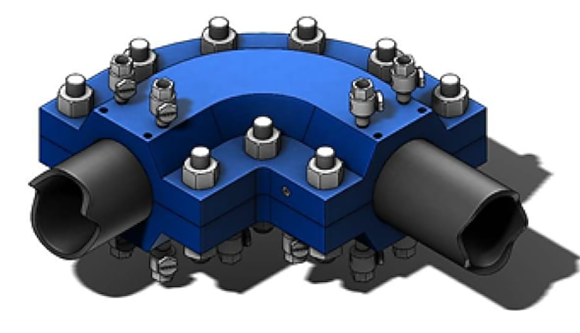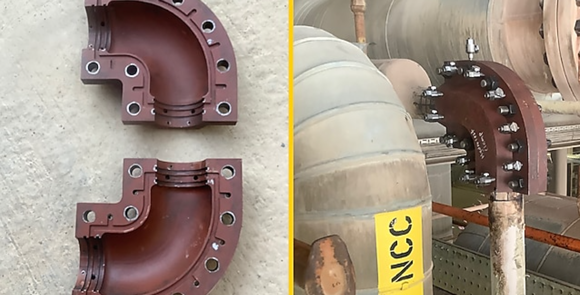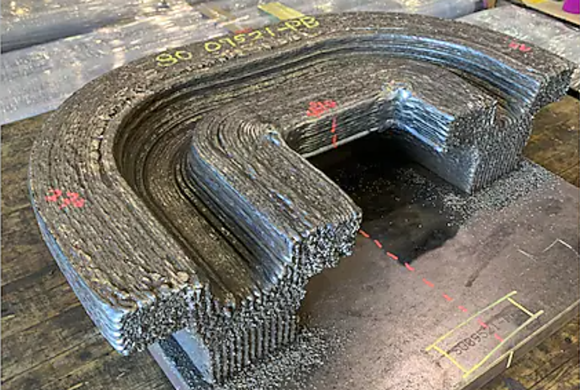Shell produces and deploys first additively manufactured leak repair clamp
November 30, 2022

Global energy and petrochemical company Shell reports it has successfully installed its first additively manufactured leak repair clamp in service. Clamps, also known as mechanical leak repair enclosures, are engineered solutions that are used to encapsulate and restore integrity of operating pipelines against pipeline defects or wall thinning arising through erosion and corrosion mechanisms.
Traditionally, a simple clamp can be manufactured within 3-5 days, but complex clamps may take four weeks or more when factoring in delivery times. The ability to apply temporary repairs, however, is critical to enable facilities to remain on-stream. Defects can occur in diverse locations given the complexity of piping systems, often triggering the need for dedicated, customised solutions. The speed of response to restore the mechanical integrity and continuous safe operation of the asset is critical.
A proof of concept was executed collaboratively by Shell; TEAM, Inc.; and Vallourec. Together, the team established a technical specification and inspection test plan for what is being referred to as the first clamp with an industrial application to be produced completely via the Wire Arc Additive Manufactured (WAAM) process. The goal was to verify the feasibility of using a WAAM technique to produce clamps for leak repair which will meet the required quality assurance for medium-pressure steam systems. The proof of concept helped gather insights into the steps needed to improve the quality and productivity for future applications.
The resultant AM clamp successfully passed the burst test conducted at 142.4 bar (over 5 X the intended design pressure), satisfying the required technical readiness within Shell to qualify the part for field application.

In this case, the overall delivery lead time was longer than for a conventionally manufactured clamp, as it was the first to be produced. This is because it falls under the highest criticality category under the DNV-ST-B203 Additive Manufacturing of metallic parts. Three sets of clamps were produced for extensive testing, though only one was eventually installed. As it was the first demonstration project, the team focused more on designing the clamp for a 100% inspection success rate rather than on design optimisation.
The project involved the shipment of the parts for Additive Manufacturing and testing at different locations and countries, which contributed to the lengthened lead time and costs. The different steps involved in the procurement process, as well as quality assurance & control were said to account for over 50% of the time required for the proof of concept.

The next phase will focus on ensuring the product quality and consistency, as well as reducing the lead time and costs of the AM of selected clamps by streamlining the qualification process and reducing the need for duplicable parts. It is intended that the future projects will enable the following:
- the formation of a database with all inspection and qualification test results reflecting the quality variance in WAAM parts, as analysing this data can help reduce the criticality classification of AM spare parts, or the amount of non-destructive testing required prior to using the parts in production
- the development of application specific qualification requirements, allowing more complex parts to be qualified based on case history and successful in-service use cases of simpler parts
- the creation a library of qualified configurations to reduce qualification efforts of same or similar products in future
















